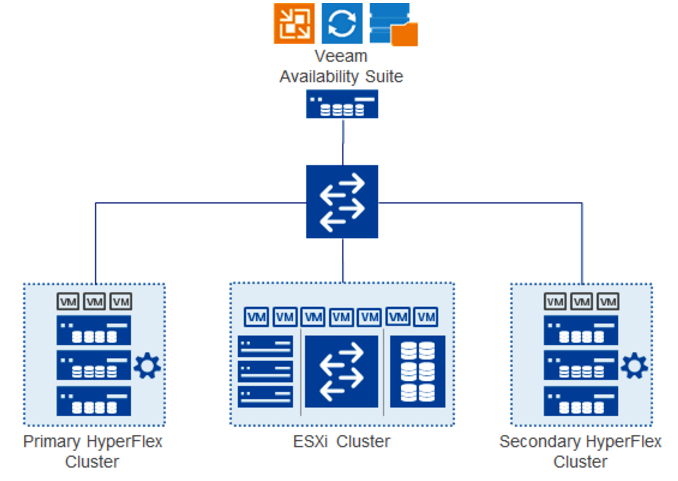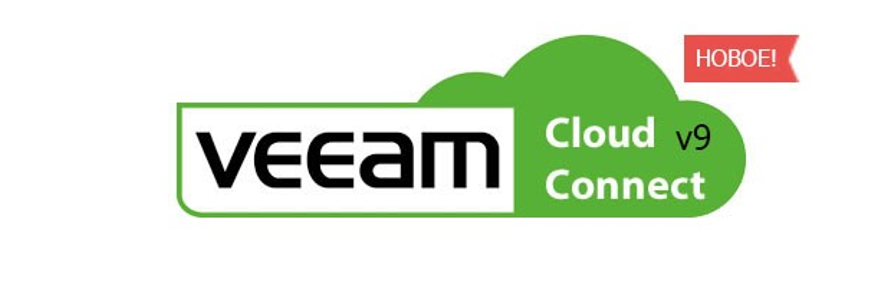Veeam Availability Suite now supports integration with Cisco HyperFlex
Veeam Software AG with Cisco Technology, Inc. introduced the Availability Suite tool that allows you to work with snapshots and backups of the Cisco HyperFlex hyperconvergent solution. The company claims that it will reduce the recovery time of IT systems, as well as increase their productivity.

/ photo Carolina Prysyazhnyuk CC
Veeam Proxy now has the ability to read data directly from Cisco HyperFlex virtual machines using the HyperFlex NFS data network. At the same time, information transfer can be carried out using IO Visor with optimal broadcast channels or with support for HyperFlex Controller Cluster Master. The image below shows an example of such an architecture.
')

There are several advantages to the direct integration of Veeam and HyperFlex. Now users have the ability to restore backups as often as tasks require, and with minimal impact on the company's production processes. Veeam was able to significantly reduce the impact of creating and deleting snapshots on performance.
The new Availability Suite tool has doubled the speed of copying, compared to standard vSphere APIs, as these backups are read directly and asynchronously from the file system. Also, users were able to transfer workloads to other HyperFlex systems and other vSphere environments.
In this case, the Veeam replication tool copies the original virtual machine running on the source host and creates a full copy of it on the destination host. Copy speed is high because the replica of virtual disks is kept uncompressed in its original form. Moreover, Veeam only copies data blocks that have changed since the last working session.

As stated by representatives of companies, this approach will provide greater accessibility when working with storage Snapshots. "It is very important for businesses to reduce data recovery time and applications," said Peter McKay, head of Veeam. “By joining with Cisco, we were able to provide customers with high availability of information so that they can fully realize their IT potential.”
Here are some more materials from the “First Corporate IaaS Blog”:

/ photo Carolina Prysyazhnyuk CC
Veeam Proxy now has the ability to read data directly from Cisco HyperFlex virtual machines using the HyperFlex NFS data network. At the same time, information transfer can be carried out using IO Visor with optimal broadcast channels or with support for HyperFlex Controller Cluster Master. The image below shows an example of such an architecture.
')

There are several advantages to the direct integration of Veeam and HyperFlex. Now users have the ability to restore backups as often as tasks require, and with minimal impact on the company's production processes. Veeam was able to significantly reduce the impact of creating and deleting snapshots on performance.
Materials from our blog: about Veeam
The new Availability Suite tool has doubled the speed of copying, compared to standard vSphere APIs, as these backups are read directly and asynchronously from the file system. Also, users were able to transfer workloads to other HyperFlex systems and other vSphere environments.
In this case, the Veeam replication tool copies the original virtual machine running on the source host and creates a full copy of it on the destination host. Copy speed is high because the replica of virtual disks is kept uncompressed in its original form. Moreover, Veeam only copies data blocks that have changed since the last working session.

As stated by representatives of companies, this approach will provide greater accessibility when working with storage Snapshots. "It is very important for businesses to reduce data recovery time and applications," said Peter McKay, head of Veeam. “By joining with Cisco, we were able to provide customers with high availability of information so that they can fully realize their IT potential.”
Here are some more materials from the “First Corporate IaaS Blog”:
- Three reasons why using VMware vSphere 6.0 is still relevant
- Stretch Deploy for vCloud Connector: functional features and operating principle
- Design of accessibility zones in vCloud Director
- Unboxing all-flash NetApp AFF A300 storage system: specifications and inside view
- Transformation of a virtual infrastructure, or How the IaaS cloud influences the development of new trends
- SAP HANA and software-defined data center: practical case
Source: https://habr.com/ru/post/323510/
All Articles

